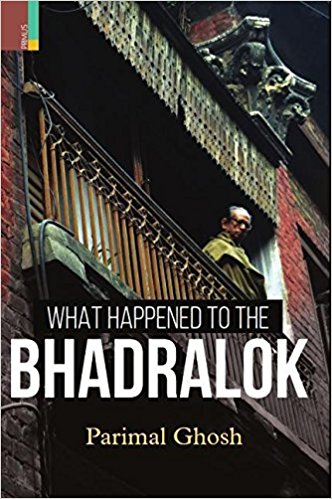Years ago I was told by a friend that if only Jyotibabu had become Jyotida, the Left would not have declined (and nearly disappeared) in West Bengal. In other words, had prominent bhadralok (babu) leaders—Jyoti Basu, for example—of the Left cared a little less about preservation of their self-image and more about ‘connection’ with people things would, perhaps, be different today. Readers, of course, will know that there is much more to the story of the end of Left rule in the State. The purpose of this review is neither to understand the causes behind the decline of the Left nor the role of the bhadralok in it. It is concerned, in the twin contexts of the comment made above and Parimal Ghosh’s book, mainly with a group of Bengalis called bhadralok whose classic representative was Jyotibabu and before him say, Bankimbabu (Bankimchandra Chatterjee) and Rabibabu (Rabindranath Tagore) and many, many others; in fact, contemporary bhadraloks are a fairly large number too.
As a primarily upper caste group belonging to the Brahman, the Vaidya and the Kayastha castes in the main, with distinctive features pertaining to speech, dress, life-style, eating habits, occupations, associations, cultural values and social propriety, the bhadralok began consolidating its character and hegemonic position mid-19th century onwards. Access to the newly introduced English education and the proscription of physical labour went into the making of this quintessentially urban group. However, all ‘through [its] existence’, writes Ghosh, ‘the social composition of the bhadralok, and also what it takes to be a bhadralok has changed’ (p.4). What has remained unchanged though are the myth and idea of the bhadralok which occupies disproportionate space in the Bengali cultural imaginary. Expectedly, the bhadralok continues to animate the scholarly concerns of quite a few social and cultural historians. One encounters intellectual treatment of this group in works ranging from, for example, John Broomfield, Sumit Sarkar, Andrew Sartori to Tithi Bhattacharya’s The Sentinels of Culture: Class, Education, and the Colonial Intellectual in Bengal (1848–85) (Oxford, 2005). Viewed thus, the present book traverses a well-trodden academic path, recalibrating some of the arguments which students of social and cultural history of Bengal are likely to be familiar with.

